Cross Stitch Fabrics: A Guide to Choosing the Perfect Fabric for Your Project
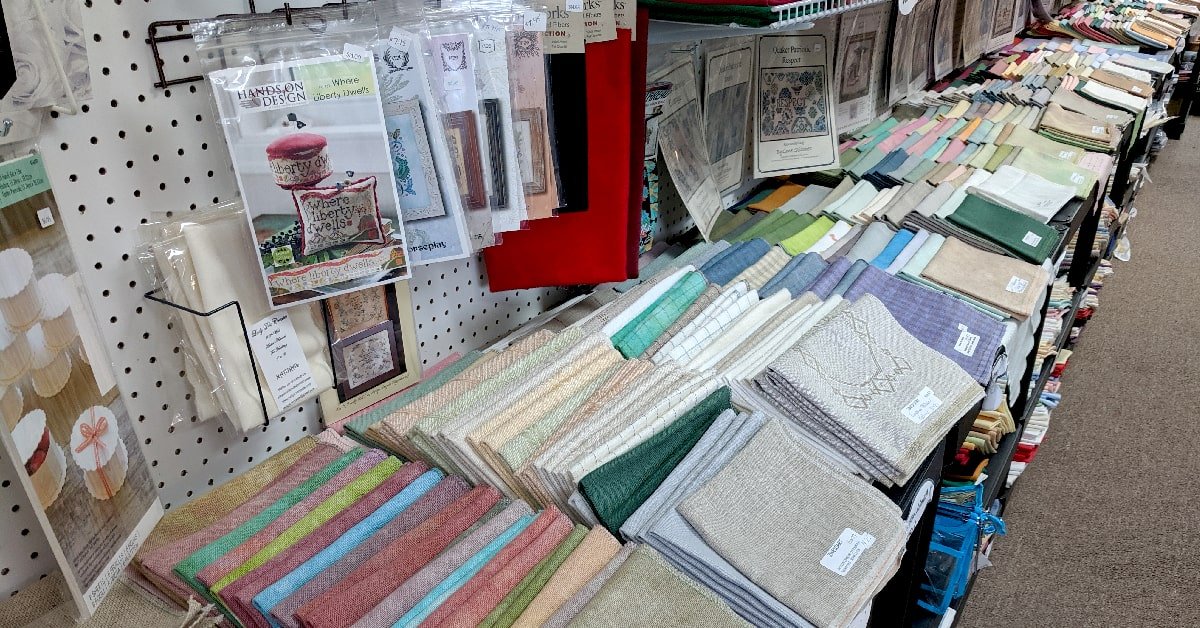
Welcome to our comprehensive guide on cross stitch fabrics! Choosing the right fabric is crucial to the success of your cross stitch project.
Whether you’re a beginner or an experienced stitcher, this guide will help you navigate through the different types of fabrics available, including Aida cloth, evenweave, and linen.
Discover their unique features, benefits, and how to select the perfect fabric that matches your skill level and desired outcome. Let’s dive in and find the fabric that will bring your cross stitch creations to life!
WANT FREE CROSS STITCH PATTERNS?
Sign up for my newsletter to get access.

What is Aida?
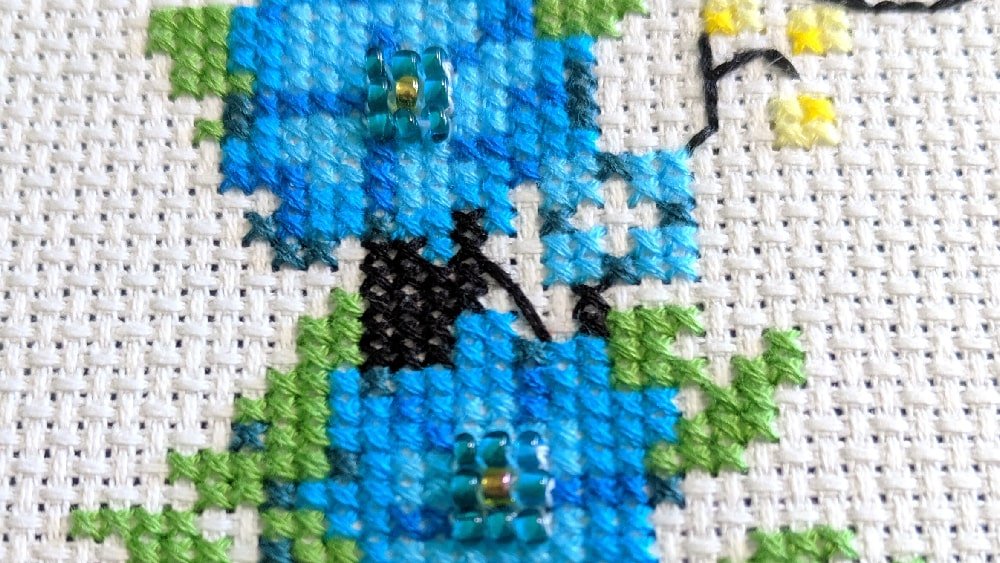
Aida fabric is a popular choice for cross stitch projects. It is a type of even-weave fabric specifically designed for cross stitching. Aida cloth is made from 100% cotton and has a distinctive grid pattern with evenly spaced holes.
The fabric is woven in a way that creates a visible and regular pattern of holes, forming a grid. This grid helps cross stitchers easily count stitches and ensures consistent spacing between them. The most common Aida fabric has a square grid, where each square represents one cross stitch.
Aida fabric is available in different counts, which refers to the number of holes per inch. It has a larger thread count, such as 11, 14, 16, 18, 20, and 22. However, the most common sizes are 14, 16, and 18 count.
A 14-count Aida cloth has 14 holes per inch, resulting in larger stitches, while an 18-count Aida cloth has 18 holes per inch, yielding smaller stitches. The choice of count depends on the desired size and level of detail in the finished piece.
One of the advantages of Aida fabric is that it is relatively easy to work with, especially for beginners. The visible holes make it simple to insert the needle and ensure accurate stitch placement. Additionally, Aida fabric is sturdy and holds up well during stitching.
This fabric is usually pretty stiff but will become softer when washing. This is great for stitchers who want to stitch in-hand.
Aida fabric comes in various colors, with white and off-white being the most common. However, you can also find Aida cloth in a range of other colors, allowing you to choose a background that complements your cross stitch design.
Overall, Aida fabric is a versatile and widely used fabric in cross stitching, known for its clear grid and ease of use.
Pros and Cons of Stitching on Aida
Stitching with Aida fabric, a popular choice for cross stitch projects, has its own set of pros and cons. Here are some key points to consider:
Pros of stitching with Aida fabric:
- Ease of Use: Aida fabric’s visible grid pattern and evenly spaced holes make it beginner-friendly, allowing for easy and accurate stitch placement.
- Counting Made Simple: The grid on Aida fabric helps with stitch counting, making it convenient to follow patterns and maintain consistent spacing.
- Sturdy and Durable: Aida fabric is generally sturdy and holds up well during stitching, ensuring your project remains intact.
Cons of stitching with Aida fabric:
- Limited Texture: Aida fabric has a plain and uniform appearance, lacking the textured or organic look that some stitchers prefer.
- Larger Stitches: The standard Aida cloth tends to have larger holes and stitches due to its lower thread count, which may limit intricate detail in designs.
- May Require Washing/Finishing: After completing your cross stitch project on Aida fabric, you may need to wash, block, or finish it to remove wrinkles or hoop marks.
It’s important to note that the pros and cons can vary depending on personal preferences, project requirements, and the desired outcome. While Aida fabric is a popular choice, other fabrics like evenweave or linen may better suit certain stitching preferences. Ultimately, it’s worth experimenting with different fabrics to find the one that best fits your style and the specific project you’re working on.
What is Evenweave?

Evenweave fabric is another type of fabric commonly used in cross stitch and other embroidery projects. Unlike Aida cloth, which has a distinct grid pattern, evenweave fabric has a more uniform appearance without visible holes or a pre-defined grid.
Evenweave fabric is woven in a way that produces an equal number of horizontal and vertical threads per inch. This creates a consistent and balanced fabric with an even distribution of threads. It typically has a higher thread count than Aida cloth, which means there are more threads per inch.
The higher thread count of evenweave fabric allows for more detailed and intricate stitching. It creates a smoother surface for stitches, resulting in a finer and more refined finished piece. However, this also means that stitching on evenweave fabric may require more precision and attention to detail.
Evenweave is made of cotton or cotton blend and has a higher thread count, including 25, 28, 30, 32, 36, and 40. Depending on the brand, some evenweaves are softer and others are stiffer.
When working with evenweave fabric, it is common to use techniques like fractional stitches or specialty stitches to achieve finer details or curved lines. Additionally, evenweave fabric often requires the use of a hoop, frame, or stretcher bars to maintain tension and keep the fabric taut during stitching.
Overall, evenweave fabric is a popular choice for stitchers who seek a more refined and detailed finish in their cross stitch projects. It offers greater versatility and flexibility compared to Aida cloth, but it may require more experience and skill to work with effectively.
Pros and Cons of Evenweave
My favorite fabric to stitch on is evenweave because of its smaller thread count and evenness. Here are some pros and cons to consider:
Pros of stitching with evenweave fabric:
- Fine Detailing: Evenweave fabric has a higher thread count compared to Aida cloth, allowing for more intricate and detailed stitching. It is ideal for capturing finer details in complex designs.
- Smooth and Refined Finish: The tight weave of evenweave fabric creates a smooth surface, resulting in neat and professional-looking stitches. It enhances the overall appearance of the finished project.
- Versatility: Evenweave fabric comes in various thread counts, allowing stitchers to choose the level of detail they desire. It provides more options for adapting to different patterns and designs.
Cons of stitching with evenweave fabric:
- More Challenging for Beginners: Evenweave fabric’s higher thread count and absence of a visible grid pattern can make it more challenging for beginners to count stitches accurately and maintain consistent spacing.
- Requires Precision: Working with evenweave fabric demands attention to detail and precision. It may take more time and effort to achieve even tension and avoid distortion or puckering.
- Limited Texture: Compared to fabrics like linen, evenweave fabric may lack the textured or rustic appearance that some stitchers prefer.
Every stitcher has unique preferences, and what works well for one person may not suit another. It is highly recommended to explore different fabrics and experiment to discover the ideal choice that aligns with your stitching style and fulfills your project goals.
What is Linen?

Linen fabric is another type of cross stitch fabric, mostly used by advanced stitchers. It is known for its natural and rustic look, as well as its durability and strength. Linen is made from the fibers of the flax plant, and it has been used for centuries for various textile applications.
Linen fabric used in cross stitch has a higher thread count compared to Aida cloth, making it suitable for intricate and detailed designs. The higher thread count allows for smaller stitches and finer details in the finished piece. Linen fabric typically comes in various counts, such as 28-count, 32-count, or 36-count.
One characteristic that distinguishes linen fabric is its unique texture. It has a slightly slubby or uneven surface due to the natural irregularities in the flax fibers. This texture adds a distinctive and organic look to cross stitch projects stitched on linen fabric.
Working with linen fabric may require some adjustment compared to Aida cloth. The slubby texture can make it slightly more challenging to achieve perfectly even stitches, and the fabric may be less forgiving if mistakes need to be corrected. However, many stitchers appreciate the aesthetic and tactile qualities that linen brings to their projects.
To work with linen fabric, it is often recommended to use a hoop, frame, or stretcher bars to maintain tension and keep the fabric taut during stitching. This helps ensure that the stitches lay flat and even.
Linen fabric is a popular choice for cross stitchers who appreciate its natural beauty, durability, and the elegant, vintage look it lends to finished pieces. It offers a unique and textured backdrop for cross stitch designs, adding character and charm to the final result.
Pros and Cons of Stitching with Linen
Stitching with linen fabric in cross stitch projects has its own set of advantages and disadvantages. Here are some pros and cons to consider:
Pros of stitching with linen fabric:
- Natural and Rustic Charm: Linen fabric lends a unique and organic look to cross stitch projects, adding a touch of rustic elegance. Its slubby texture and natural appearance create a distinct visual appeal.
- Durability: Linen is known for its strength and durability. Stitching on linen fabric ensures that your finished project will withstand the test of time.
- Fine Detailing: Linen fabric typically has a higher thread count, allowing for intricate and detailed stitching. It is well-suited for capturing delicate nuances and achieving refined designs.
Cons of stitching with linen fabric:
- Uneven Texture: The slubby texture of linen fabric, while adding character, can make it slightly more challenging to achieve perfectly even stitches. It may require extra attention and care to maintain consistent tension and avoid distortion.
- Higher Cost: Linen fabric is generally more expensive compared to other cross stitch fabrics, such as Aida cloth or evenweave. The quality and natural properties of linen contribute to its higher price point, which may be a consideration for those on a tight budget or cost-conscious stitchers.
- Advanced Skill Level Required: Stitching on linen fabric may be more suitable for experienced stitchers who are comfortable with the intricacies of working with a higher thread count fabric. Beginners may find it more challenging to work with linen due to its texture and finer stitches.
Remember, the choice of fabric ultimately depends on your personal preferences, budget, and the desired aesthetic for your cross stitch project. Consider weighing the pros and cons to make an informed decision that aligns with your needs and goals.
What are Cross Stitch Fabric Counts?

Fabric counts refer to the number of stitches per inch. The most common fabric counts include 14, 16, 18 for aida, and 28, 32, 36 for evenweave and linen. Different cross stitch fabrics will have different counts.
Aida that is 14 count has 14 holes per inch horizontally and vertically.
All fabrics should be square. It should have the same count both horizontally and vertically otherwise your project will be distorted. This is a common problem in lesser quality fabrics.
In some patterns it may be less noticeable, but in some where the pattern is a circle or square it can be extremely obvious. I recommend not using it, but that’s just me.
I suggest buying a reputable brand such as Charles Craft, Wichelt, and Zweigart. They specialize in cross stitch fabrics so you know you are getting quality.
The higher the stitch count the smaller your final project will be. The smaller the stitch count the bigger the project will be.
If you want your project to fit within the dimensions of a specific frame, figure out which fabric count you will need to make that happen.
What Does Stitching Over 1 Versus Over 2 Mean?
When you stitch over 1 you are going from one hole to the next. This is evident when using aida and smaller count fabrics. You will stitch over 1 hole to complete one full X.
On higher count fabrics you will stitch over 2. Instead of putting your needle into the next hole you skip 1 to create your cross stitch in the 2nd hole.
When you see 1 over 1 that means one strand of floss over 1 hole. Most patterns call for 2 strands of floss for cross stitch, in other words 2 over 1 for aida.
On higher counts, many times you might see 2 over 2, meaning stitch 2 strands over 2 threads.
Because you are skipping a hole, evenweaves and linens are perfect for fractional stitches, such as quarter and 3/4 stitches. With aida, you would have to create that extra space for the fractional stitch.
In most cases this will be the case for evenweave and linen, which is why they are the same size as their over 1 counterparts. For example, a stitching over 2 on 32 count is the same size as a stitching over 1 on 16 count.
The exception is 25 count evenweave. Usually stitchers will stitch 2 over 1 on this fabric.
What is the Best Cross Stitch Fabric for Beginners?
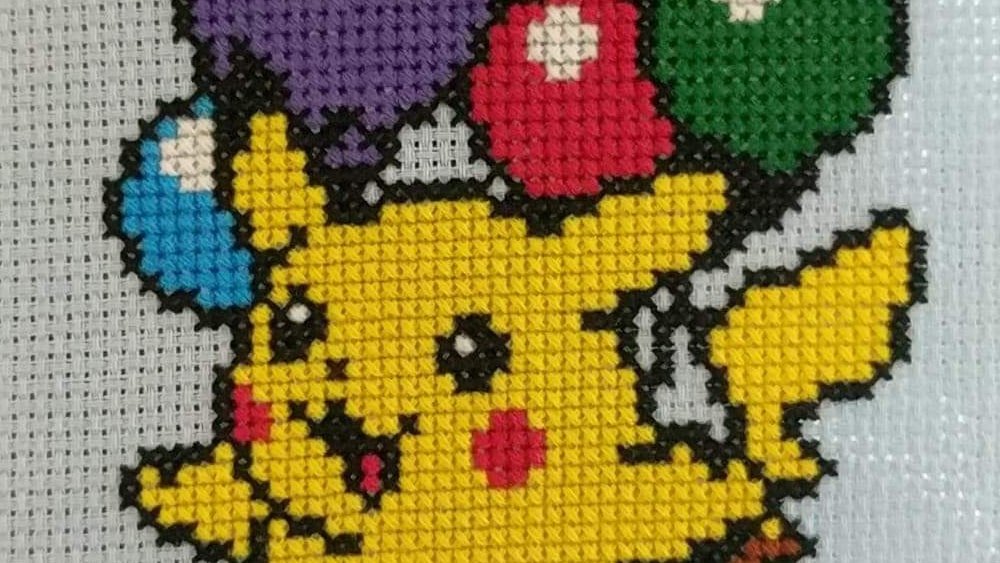
The easiest fabric for beginners to start cross stitching on is 14 count aida. It’s more beginner-friendly because the squares are easier to count while still providing good coverage with 2 strands of thread.
The 14 count fabric means that there is more space between the holes, making them easier to see and distinguish from one another. In addition, you simply have to count over 1 to create your stitches.
As you become more advanced, you may want to venture into evenweaves or linens. Evenweaves would be slightly easier than linen to deal with because the fibers are even.
I recommend trying evenweave as the next step in your stitching journey, eventually working up to linen.
How to Calculate How Much Fabric You Need for Your Project
The fabric count is the number of stitches per inch. Keep in mind that the higher the fabric count, the smaller your project will be.
When you’re trying to figure out how big a pattern is you need to know the fabric count because the fabric count is going to determine the size.
For example, if the pattern is 45×45 stitches that would equal…
3.2”x3.2” on 14 or 28 count
2.8”x2.8” on 16 or 32 count
2.5”x2.5” on 18 or 36 count
You divide the stitch number by the count. In other words 45 divided by 14. Since we stitch 2 over 2 for the 28 count, the 14 count and 28 count are the same size.
If you are using 16 or 32 count you would divide 45 by 16 to give you 3.2 inches.
Don’t forget to leave yourself 3-4 inches for framing.
Let’s take my Gypsy Queen for example. She is 171×286 stitches. I am stitching her on 32 count. Her finished size will measure 10.7″x17.9″.
171 / 16 = 10.7”
286 / 16 = 17.9”
She fits on a 18”x27” fabric with plenty of margins on all sides.
18” – 10.7” = 7.3” / 2 = 3.65” margin
27” – 17.9” = 9.1” / 2 = 4.55” margin
Final Thoughts
Try different fabrics and different brands to discover which ones you like best. My favorite is evenweave but depending on the manufacturer some will be softer than others. I use different ones for different scenarios.
Generally, on aida you want to stitch 1 over 1, and on evenweave and linen 2 over 2. Although it’s not a crime to stitch 1 over 1 on higher thread counts, you may have some trouble without a magnifier.
Beginners will have an easier time stitching on 14 count aida opposed to a higher count linen.
Next time you need to figure out what size your finish project will be, now you’ll know how to do the math.
Happy Stitching!


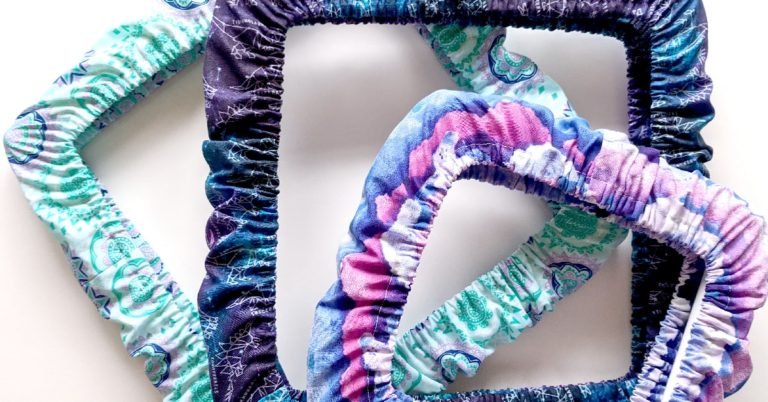
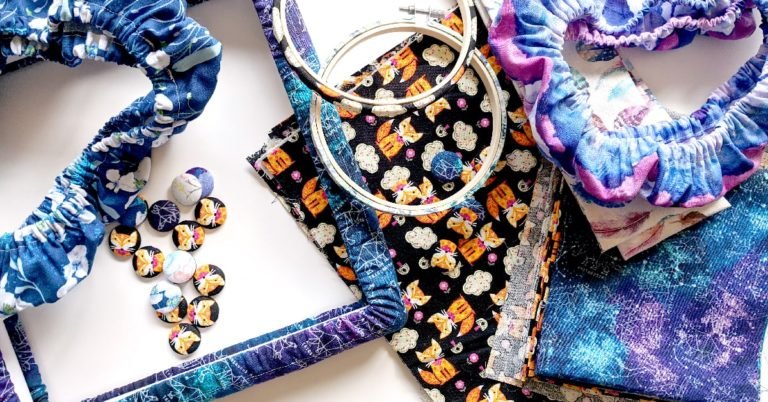
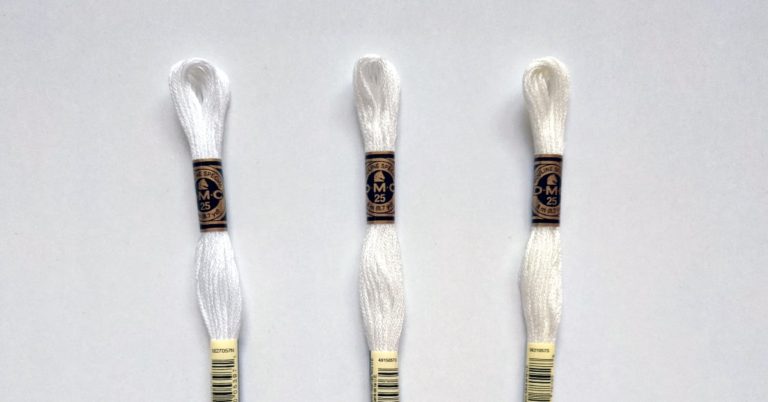
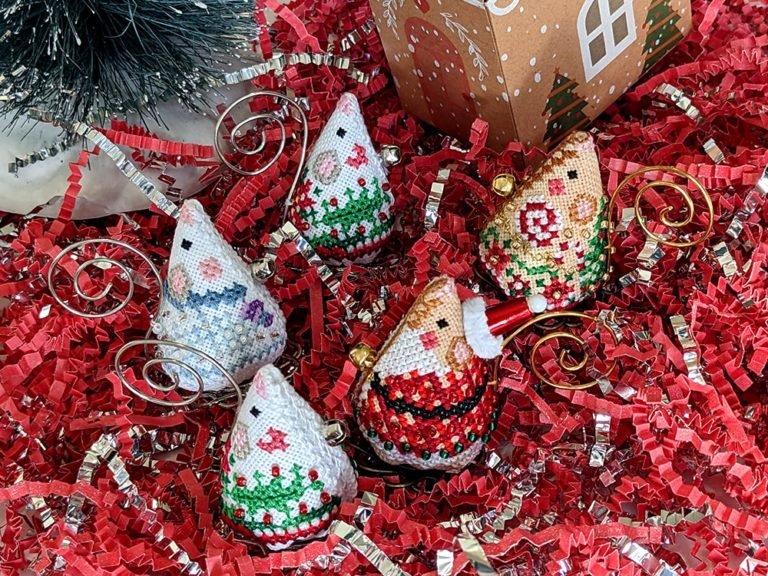
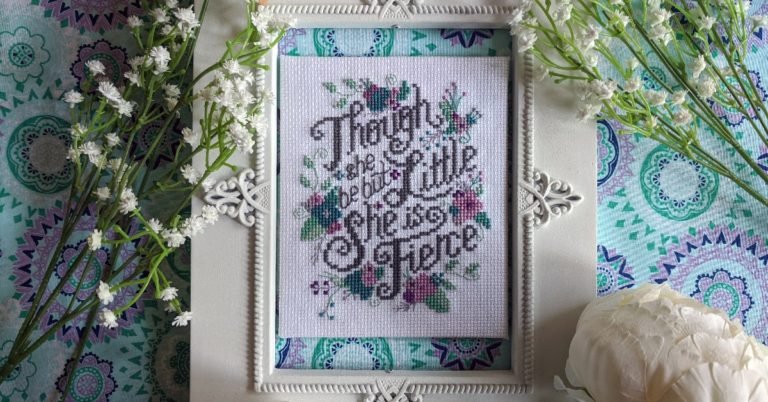
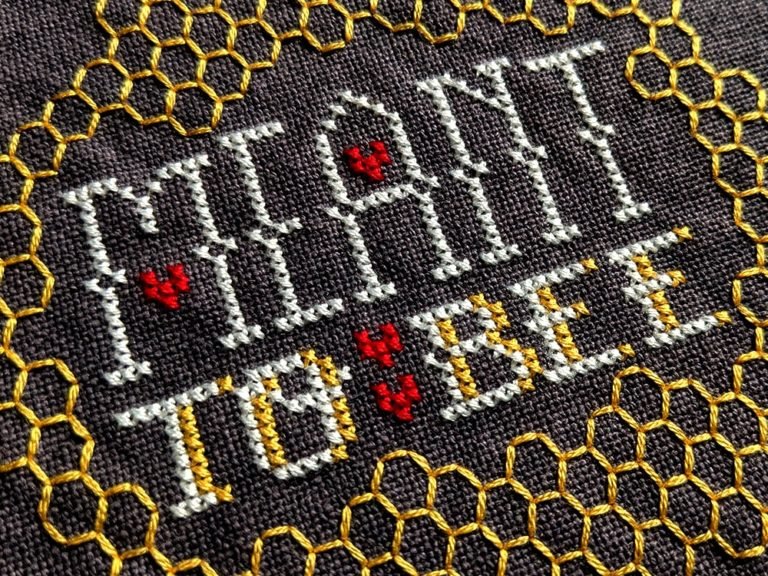
Can you assist me on figuring out what kind of AIDA cloth I need. I ordered a pattern for a friend for Christmas. It says the grid size is 256W x 202H. Design area is 16.00” x 12.63” (256 x 202 stitches). They recommend a 3 inch unstitched area. I do not know her actual expertise level with this either. The design does say they use 2 strands at a time. It says it can be placed on any count AIDA cloth but I just don’t know what would be best. Also do I need to get a ring as well? Can you assist me?
Hi. It is not necessary to use an embroidery hoop to stitch. Materials and accessories depend on their skill level and preferences. The current measurements for the finished size are for 16 count Aida. However, usually beginners like to stitch on 14 count Aida. You would need to get a pretty big size of fabric. For 14 count Aida, I would recommend 21″x36″ and for 16 count Aida, I would recommend 18″x21″. The 18″x21″ will be a little less but should still have plenty of margin. If you are worried, you can do the next size up and get 21″x36″ for either 14ct or 16ct. That will be more than enough fabric.
Hope this helps. If you have any other questions, feel free to message back 🙂
I miss count and my fabric was smaller n I need it slightly bigger how can I extend the fabric?
If it’s to stitch on, you could always sew extra fabric. However, I feel like that would bother me. If you need extra fabric for framing, you could sew on some cotton or other fabric for stretching. This works if the project will have a mat. If there’s no mat, you could find a more creative solution such as using a complementary backing fabric and wrapping the cross stitch around it’s own backing board centered in the frame.